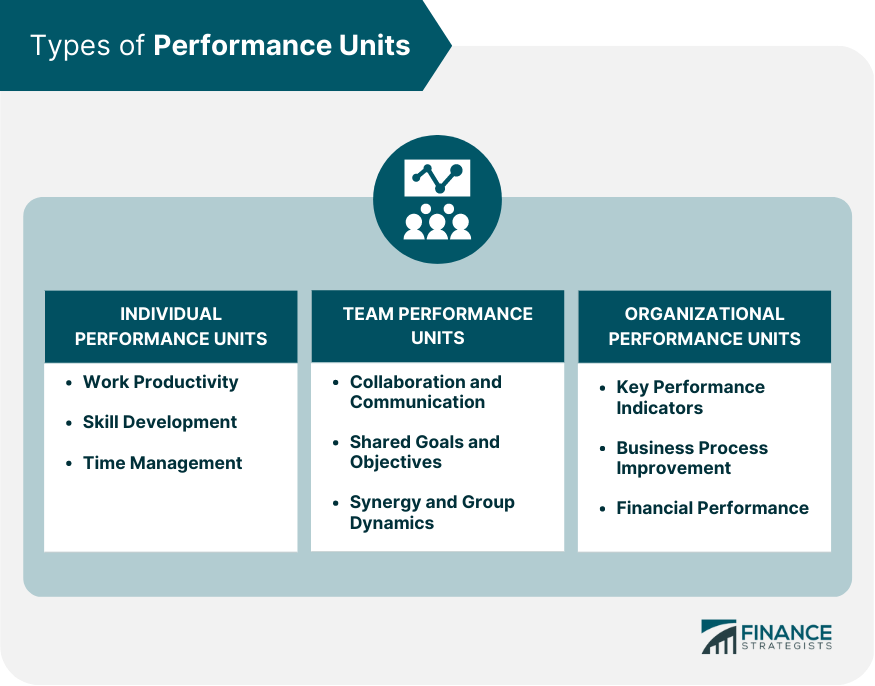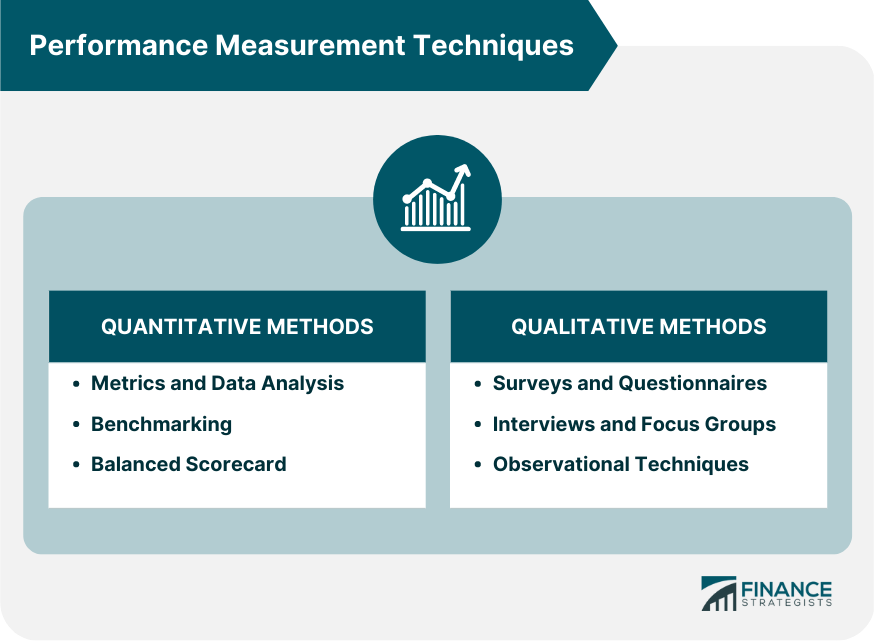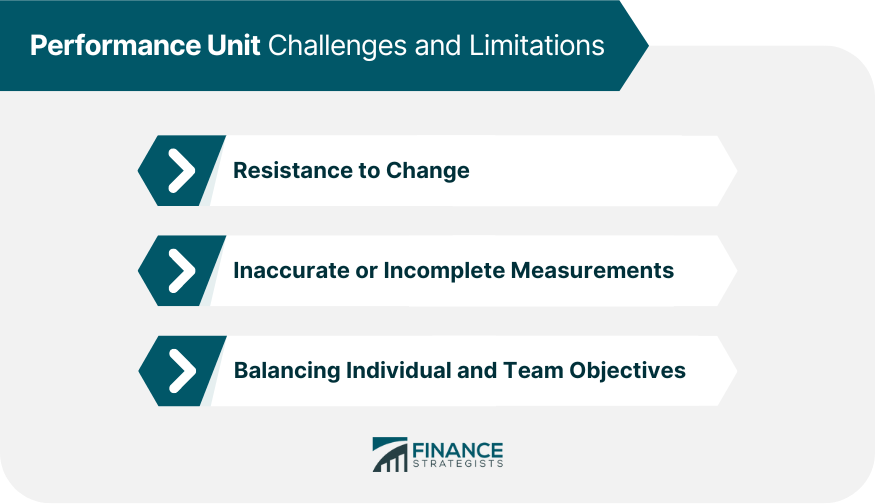Performance units are quantifiable measures used to evaluate and track the effectiveness of individuals, teams, or organizations. They help set goals, monitor progress, and make informed decisions to improve outcomes. Performance units play a crucial role in a wide range of fields, including business, sports, and education. They serve as a basis for performance evaluation, motivation, and continuous improvement across different domains. Work productivity is a performance unit that assesses an individual's efficiency in completing tasks and achieving objectives. It helps in identifying areas for improvement and setting personal goals. Skill development focuses on measuring an individual's growth in acquiring and refining specific skills or competencies. It aids in personal and professional development, as well as career advancement. Time management is a performance unit that evaluates an individual's ability to prioritize tasks, allocate resources, and meet deadlines. It is crucial for managing workload and achieving a healthy work-life balance. Collaboration and communication measure a team's ability to work together effectively and share information. This performance unit is essential for fostering a positive team culture and achieving shared goals. Shared goals and objectives are performance units that assess a team's alignment and commitment to a common purpose. They are critical for ensuring that team members work cohesively towards the desired outcomes. Synergy and group dynamics evaluate the collective performance of a team, focusing on how team members interact, support, and complement one another. This performance unit helps identify the team's strengths and weaknesses and fosters a continuous improvement culture. Key Performance Indicators (KPIs) are quantifiable metrics that gauge an organization's success in achieving strategic objectives. They provide valuable insights for decision-making and drive organizational growth. Business process improvement is a performance unit that assesses an organization's ability to optimize and streamline its operations. It focuses on enhancing efficiency, reducing costs, and improving overall performance. Financial performance measures an organization's financial health and stability. It includes metrics such as revenue growth, profitability, and return on investment, which is vital for long-term success and sustainability. Metrics and data analysis involve the use of numerical data to evaluate performance across different levels. These methods help identify trends, patterns, and areas for improvement, driving evidence-based decision-making. Benchmarking is a quantitative method that compares an individual, team, or organization's performance against industry standards or best practices. It helps identify gaps, set targets, and drive continuous improvement. The Balanced Scorecard is a strategic management tool that combines financial and non-financial performance metrics. It provides a holistic view of an organization's performance and helps align activities with strategic objectives. Surveys and questionnaires are qualitative methods used to gather feedback and opinions on performance. They help capture insights from various stakeholders, such as employees, customers, or partners, to inform improvement initiatives. Interviews and focus groups involve direct conversations with individuals or groups to gain in-depth insights into their perspectives on performance. These methods provide rich, qualitative data that can complement quantitative findings. Observational techniques involve monitoring and recording behaviors, interactions, or processes to evaluate performance. These methods provide valuable context and help identify areas for improvement that may not be captured through quantitative metrics alone. SMART goals are Specific, Measurable, Achievable, Relevant, and Time-bound objectives that help individuals, teams, and organizations set clear targets. They provide direction and focus, contributing to improved performance. Action plans outline the necessary steps, resources, and timelines for achieving a specific goal. They ensure that individuals and teams remain organized and accountable, leading to more effective performance management. Monitoring progress involves regularly tracking and assessing progress towards goals. This process enables individuals, teams, and organizations to identify obstacles, make adjustments, and stay on track for success. Skill enhancement involves identifying and addressing skill gaps to improve performance. This can include on-the-job training, workshops, or courses that enable individuals to acquire new competencies or refine existing ones. Continuous learning promotes a culture of ongoing professional growth and adaptability. It fosters resilience, creativity, and innovation, ultimately contributing to better performance across all levels of an organization. Mentoring and coaching provide personalized guidance and support to help individuals develop their skills, overcome challenges, and reach their full potential. These strategies can greatly enhance performance and job satisfaction. Constructive feedback is a crucial element of performance improvement, as it provides individuals with valuable insights into their strengths and areas for development. It enables them to make informed decisions and take action to enhance their performance. Employee performance evaluations involve formal assessments of an individual's job performance. These evaluations can help identify high performers, set expectations, and inform promotions, compensation, and professional development decisions. Performance improvement plans are structured, action-oriented programs designed to address performance gaps and help individuals achieve their goals. They offer targeted support, resources, and guidance for enhancing performance. Resistance to change can hinder the implementation of performance units and improvement strategies. It is essential to address concerns, promote buy-in, and foster a culture of continuous improvement for successful performance management. Inaccurate or incomplete measurements can lead to misleading or distorted views of performance. Ensuring data accuracy, relevance, and comprehensiveness is critical for making informed decisions and driving performance improvement. Balancing individual and team objectives can be challenging when implementing performance units. Aligning goals, fostering collaboration, and promoting shared accountability are key strategies for achieving harmony between individual and collective performance. Performance units are essential tools for evaluating and improving the effectiveness of individuals, teams, and organizations. They encompass various types, measurement techniques, and improvement strategies while also facing challenges and limitations. Performance units play a pivotal role in driving success by enabling organizations to set clear objectives, monitor progress, and make data-driven decisions. They contribute to continuous improvement, professional development, and overall organizational growth. To maximize the benefits of performance units and navigate their complexities, consider seeking the guidance of a financial advisor. What Are Performance Units?
Types of Performance Units
Individual Performance Units
Work Productivity
Skill Development
Time Management
Team Performance Units
Collaboration and Communication
Shared Goals and Objectives
Synergy and Group Dynamics
Organizational Performance Units
Key Performance Indicators
Business Process Improvement
Financial Performance

Performance Measurement Techniques
Quantitative Methods
Metrics and Data Analysis
Benchmarking
Balanced Scorecard
Qualitative Methods
Surveys and Questionnaires
Interviews and Focus Groups
Observational Techniques

Performance Improvement Strategies
Goal Setting and Planning
SMART Goals
Action Plans
Monitoring Progress
Training and Development
Skill Enhancement
Continuous Learning
Mentoring and Coaching
Feedback and Performance Reviews
Constructive Feedback
Employee Performance Evaluations
Performance Improvement Plans
Performance Unit Challenges and Limitations

Resistance to Change
Inaccurate or Incomplete Measurements
Balancing Individual and Team Objectives
Final Thoughts
Performance Units FAQs
Performance units are quantifiable measures used to evaluate and track the effectiveness of individuals, teams, or organizations. They are important in various fields, such as business, sports, and education, as they help set goals, monitor progress, and drive continuous improvement.
Individual performance units focus on evaluating aspects such as work productivity, skill development, and time management. Team performance units assess collaboration, communication, shared goals, and group dynamics. Organizational performance units involve measuring key performance indicators (KPIs), business process improvement, and financial performance.
Performance measurement techniques can be broadly categorized into quantitative and qualitative methods. Quantitative methods include metrics and data analysis, benchmarking, and the Balanced Scorecard. Qualitative methods involve surveys and questionnaires, interviews and focus groups, and observational techniques.
Challenges and limitations associated with performance units include resistance to change, inaccurate or incomplete measurements, and balancing individual and team objectives. Addressing these challenges is crucial for successful performance management and continuous improvement.
The strategies for performance improvement include goal setting and planning through SMART goals and action plans, monitoring progress, training and development such as skill enhancement and continuous learning, mentoring and coaching, and feedback and performance reviews through constructive feedback, employee performance evaluations, and performance improvement plans.
True Tamplin is a published author, public speaker, CEO of UpDigital, and founder of Finance Strategists.
True is a Certified Educator in Personal Finance (CEPF®), author of The Handy Financial Ratios Guide, a member of the Society for Advancing Business Editing and Writing, contributes to his financial education site, Finance Strategists, and has spoken to various financial communities such as the CFA Institute, as well as university students like his Alma mater, Biola University, where he received a bachelor of science in business and data analytics.
To learn more about True, visit his personal website or view his author profiles on Amazon, Nasdaq and Forbes.











